I think one of the areas you are getting confused over is "responsibility". What is each component responsible for and what can it actually do.
The problem isn't that you are passing Objects around you program, but more that the objects you are passing are exposing parts of your application that the recipient has no business knowing about or should be allowed to manipulate.
What I mean by this is, if you were to pass the "buttons" panel to the "guess" panel, because you wanted to have the ability to allow the "guess" panel detect when a button was clicked, you've exposed the "buttons" panel to an area of your application that has no right to actually see it.
What's stopping the "guess" panel from removing components? Nothing...
Instead, we should use interfaces which determine what each part of the application can and can't do and what information is available to it.
This is where you model comes in. The model determines what information is available, how it can be accessed and what events might be triggered to notify interested parties that the model has changed.
For example. Your "buttons" panel would tell the model that the user has made another guess (in response to the user pressing the button). The model would then raise an event, which would notify the "guess" panel that a change has occurred. The "guess" panel then would update it's state accordingly, asking the model for the information it needed in order to represent the current state of the model (as far as it was responsible for).
You could take a look at
Now, with the MCV pattern, the view must be able to see the model, the controller must be able to see the view and model and the model doesn't care.
The controller is listening for changes to the view (ie user interactions), which it passes to the model. The model fires notifications about changes to it's state and the view responds to those changes by updating itself as required.
For example, the use clicks a button on the "button" panel. The "button" panel's controller detects this event (probably via an ActionListener), it process this action and updates the model.
The model updates it's internal state and fires some kind of event.
The "guess" panel detects this change in the model (via some kind of listener) and updates it's view accordingly (update the guess's and the image as dictated by the model).
Now, remember, Swing doesn't use a pure MCV pattern, it's controls (ie buttons) are both the controller and the view, so just be careful when playing around with these...
I would start with a HangManModel interface which defines all the properties you want to expose, such as the guesses, the "secret" word and perhaps the number of incorrect guesses made and the state of the game (win or lose) for example.
I would also define the listeners that might be registered to the model, which describes the events that this model can generate. You could use a PropertyChangeListener or even a ChangeListener or define your own, based on your own needs, for example...
public interface HangManModel {
public void addGuess(char guess);
public char[] getGuesses();
public String getSecretWord();
public int getState(); // running, win or lose
public void addChangeListener(ChangeListener listener);
public void removeChangeListener(ChangeListener listener);
}
Now this is just an example, personally, I might be tempered to hide the secret word and expose properties about it (like it's length for example). You could also be tempted to provide a setter for the secret word, so the model could be reset...
This would represent the "heart" of your application, around this, you would build your views and controllers.

